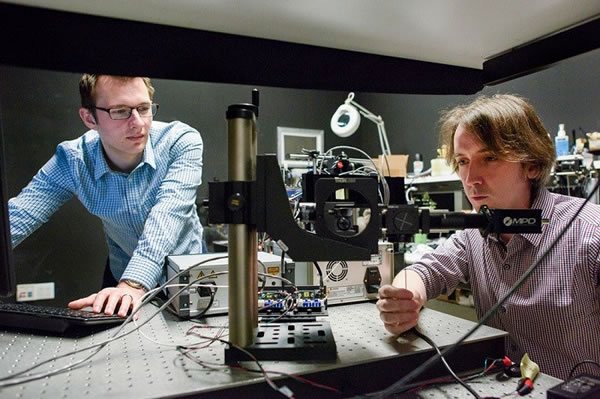Many unmanned vehicles that have been tested on the road have been equipped with basic environmental awareness and emergency avoidance capabilities. But for some potentially invisible threats, it is not yet well avoided. The good news is that a Stanford research team is developing a new laser-based system. Its purpose is to make the driverless car “see†the blind spots in the corners and respond before children or other vehicles suddenly pop out. Because the naked eye can not directly see through, it uses laser pulses to align the blind spots in the corners. It is reported that a high-sensitivity sensor can capture the returned light information and perform algorithm analysis to obtain a "blurred snapshot hidden outside the line of sight." Although it sounds "high-tech," this is not the first time scientists have successfully demonstrated this "exclusive function." As early as 2012, an MIT team conducted similar system experiments. In 2014, European and Canadian researchers had been able to reproduce the "light echoes" of hidden objects. However, Stanford scientists point out that their progress is mainly reflected in the mathematical aspect. Since light is scattered by an object, it can be fed back to the sensor from almost all directions, creating a large amount of "noise." To this end, the Stanford team developed an advanced algorithm that can calculate the captured photon path and then use it to reproduce the object. Co-author David Lindell said: One of the major challenges of non-line-of-sight imaging is to find an effective way to measure the noise and reconstruct the 3D structure of hidden objects. I think the biggest impact of this method is its computational efficiency. Researchers say that their algorithm can complete the analysis of photon data in less than a second, which is so efficient that it can run directly on ordinary laptops. The practical obstacle to the current level of sweep is on the initial scan: In order to generate enough data for a hidden object, the system needs to emit many laser pulses in one process, but it takes less than an hour to become unnecessary. Another issue is ambient light. Under carefully controlled laboratory conditions, the system works without problems. But to bring it under the bright sun, the sensor may be a bit overwhelmed. The good news is that in outdoor testing, researchers found that this technology can clearly capture highly reflective objects, such as bright clothing colors, signs and signs. In the future, researchers hope to further improve their scanning speed, their ability to work in sunlight, and even detect moving objects. Perforated Metal Mesh have higher precision than common weave mesh, the hole size is consistent, it is processed uniformly by machine, and have no broken wire. thickness of the Perforated Sheet is according to hole size, Normally the hole can be made from 50 micron to 60 mm. if you have any other special requirement, we also would like to offer assistance and support. Perforated Metal Mesh Perforated Metal Net, Punching Plate, Perforated Mesh Plate, Stainless Steel Perforated Mesh, Perforated Sheet Xinxiang Xin Ming De Machinery Co., Ltd. , https://www.xmdsieve.com
Researchers David Lindell and Matt O'Toole conduct systematic tests
New Laser System Allows Autopilot Cars to See Through Corner Blinds